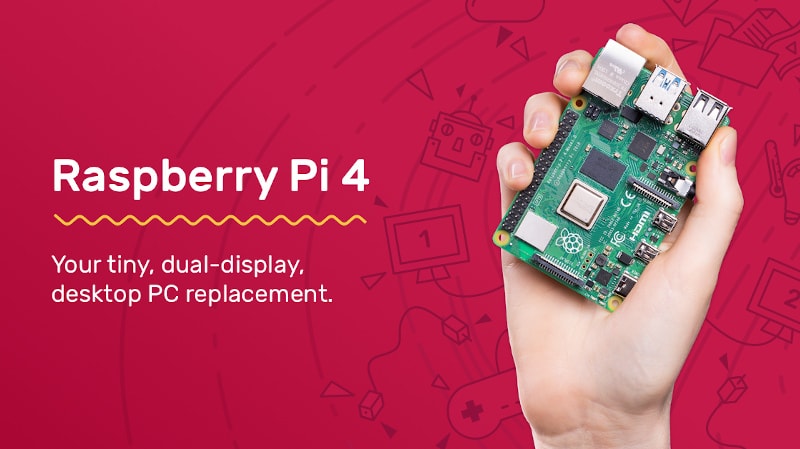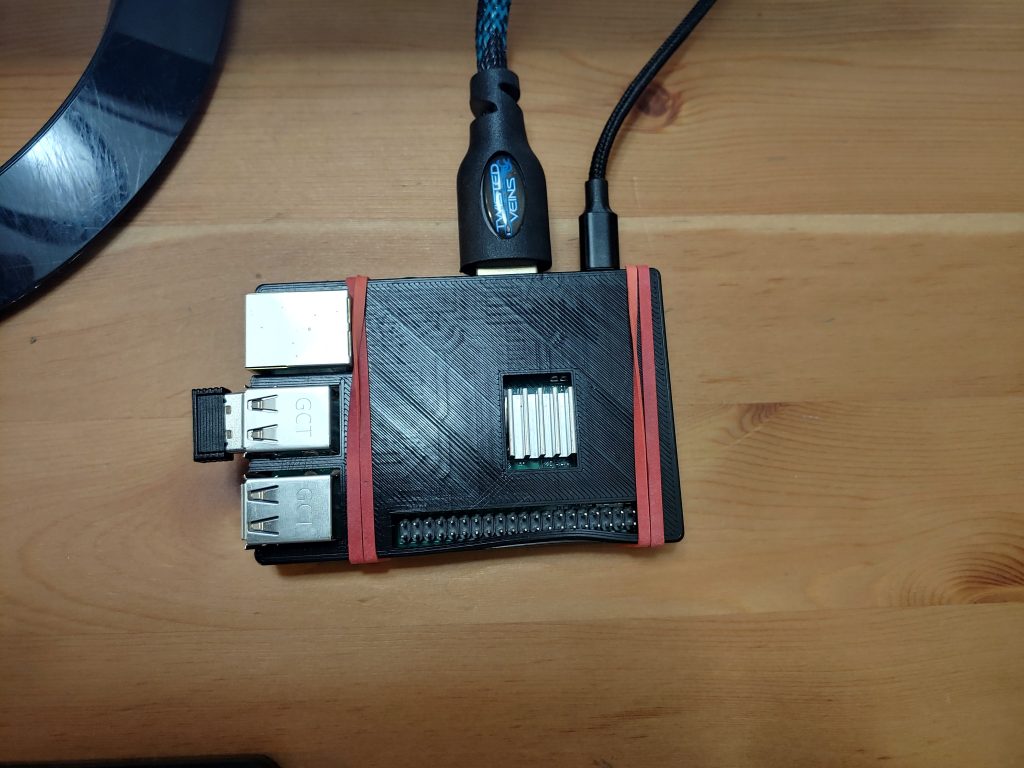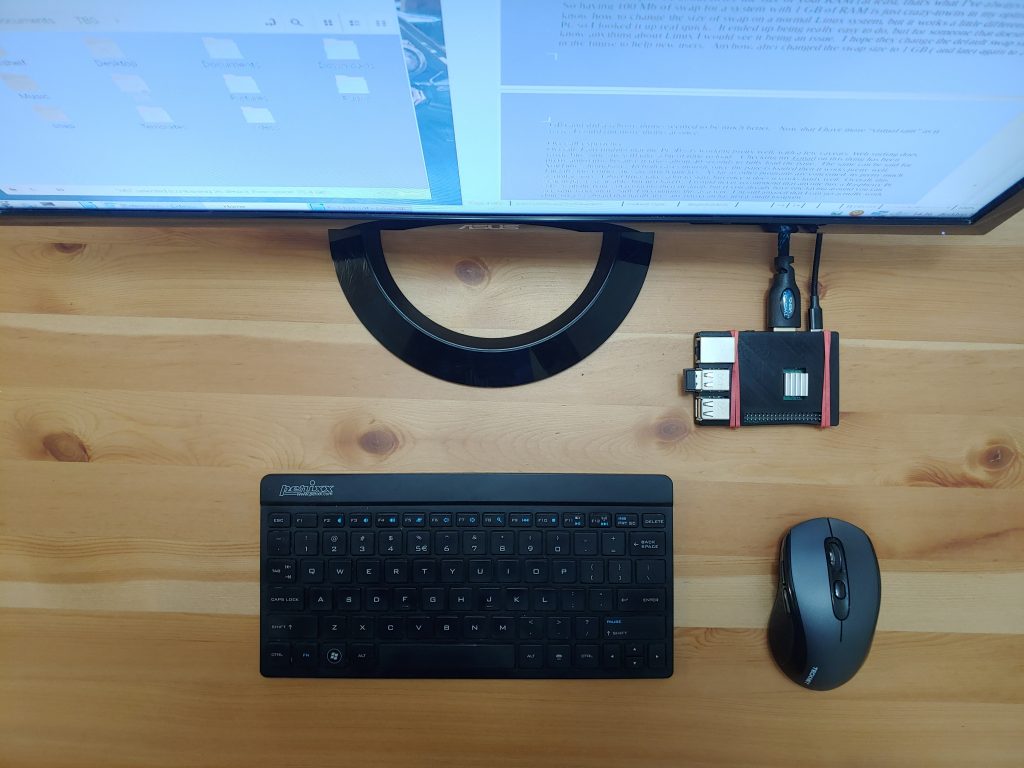
The Raspberry Pi is a really fun and useful piece of tech that could potentially replace a desktop computer.
This one will just be a quick post. I just wanted to share what I’ve been up to lately. As many will probably already know, The Raspberry Pi 4 has been out for a bit now. For those who don’t know, Raspberry Pi’s are small single-board computers with a footprint that’s a little bigger than a credit card. They are made with the intend to aid in education, but are often used by tinkerers for all sorts of projects. Anyway, The Raspberry Pi Foundation just released the Raspberry Pi 400, which is basically a Pi 4 with a slightly better processor that’s built into a keyboard. People have been singing it praise for the most part, saying that this little guy is finally ready for the big leagues, as in it’s at the point where it could replace a desktop (with a few compromises of course). Naturally, this has really gotten me wanting to try one out. Unfortunately, I am a bit of a cheapskate. Yes, the Pi 400 only comes in at around $70 for the base config, and $100 for the kit (which includes a power source, SD card, and a mouse), but I don’t want to buy it, use it for a few days and put it away for years. In fact, I have a Pi 3 B+ that I haven’t touched for almost a year that’s just collecting dust. Well it was collecting dust, until last week. I decided to break it out and see how much I could get done on that guy first. I figured that if I could make this thing somewhat useful, then getting a Pi 4 or 400 would then blow my socks off. Let see how my little gambit payed off.

The old pi that was laying around had already been set up before. It was running the Raspbian operating system. I fired it up, and was quickly reminded of why I didn’t use it. Raspbian never really tickled my fancy. The user interface looked terrible, and the system theme just hurt my eyes. Also, I remember that the browser that’s that came installed wasn’t the best. After being reminded of all of this, I quickly decided to download the newest offering from the Pi Foundation, which is Raspberry Pi OS. I’d heard that the Pi Foundation had made a lot of major updates and changes with this version, so I decided not to waist any time with the old setup. After a downloading and flashing the image to my SD card, I was ready to go. On the first boot, I quickly saw that Raspberry Pi OS was indeed a huge improvement. The OS is much more aesthetically pleasing, and it feels like it’s a little quicker as well. The default applications that come installed seem to make more sense as well. The default browser is now Chromium, for instance.

After a bit of personalization tweaks, like changing the desktop wallpaper and moving the system panel to the bottom of the screen, I started putting the system through its paces. I figured that if I actually ended up using this, it would probably be for light web browsing, writing articles, and coding projects. I started chromium and opened up a few tabs, and went straight to YouTube on one of them. Video playback seemed to be solid for anything 480P and below. 720P worked, with some buffering and hiccups. Overall I was pretty pleased with the good results, while they lasted. After a couple minutes of testing, the system just started to freeze up and become unusable. I figured this was due so some lack of resources, so I rebooted the Pi and installed and ran htop (a program that shows how much of your CPU and RAM you’re using, as well as programs and processes that are running) and saw that there was only 1 GB of ram on the system. Sadly, I couldn’t really do anything about that. Another thing I noticed was that the swap size for only set for 100 Mb. For those that don’t know, swap is similar to page-files in Windows. In a nutshell, how it works is when you system runs out of ram space, the system can start writing to a pre-allocated space in your hard drive. Accessing this hard drive storage space ends up be much slower then accessing ram, so your system tries to use it as a last resort. In general, when you have a system that doesn’t have much ram, you want your swap to be about twice the size of your RAM (at least, that’s what I’ve always been told). So having 100 Mb of swap for a system with 1 GB of RAM is just crazy-towns in my opinion. I know how to change the size of swap on a normal Linux system, but it works a little different on a Pi, so I looked it up real quick. It ended up being really easy to do, but for someone that doesn’t know anything about Linux I would see it being an issue. I hope they change the default swap size in the future to help new users. Anyhow, after changed the swap size to 1 GB ( and later again to 2 GB) and did a reboot, things seemed to be much better. Now that I have more “virtual ram” as it were, I could run more things at once.
Overall experience
Overall, I am finding that the Pi 3B+ is working pretty well, with a few caveats. Web surfing does work, but some site will take a bit of time to load. Checking my Gmail on this thing has been pretty annoying, because it takes about 40 seconds to fully load the page. The same can be said for YouTube’s homepage. In both cases though, once the page is loaded then it works pretty well. Luckily, most other sites are much quicker. As far as other programs are concerned, its pretty much a similar story. LibreOffice takes a bit to start, but once it does it works fairly well. Overall, this system passes as usable, but just barely. I would never recommend that anyone buy a Raspberry Pi 3 B+ with the hopes of replacing their desktop, but if you already have one laying around you can get some work on it. Still, I’m counting this as a win. I’m still amazed that I can get actually work done on a $35 board that hardly uses any power an has just a small footprint.
Since this little experiment was a success, I will go ahead and order a Pi 4 [future edit: it’s ordered! ]. Its faster, can come with much more ram (coming in a 2, 4, and 8 GB options), and can work with 32 bit and 64 bit images, which opens the door to a bigger selection of Distribution images, as well as applications that I can install. I’ll keep you guys posted on how it goes. Have any of you got a chance to mess around with the Pi 4 / 400, or any Pi for that matter? What are your experiences with them? Feel free to post a comment and let us know!
